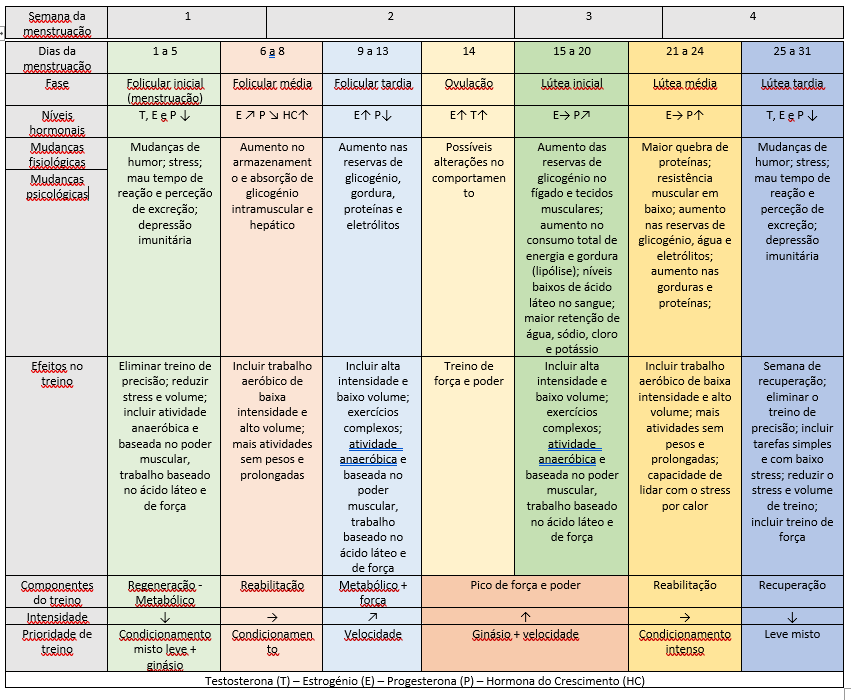Well, no. But possibly yes. It depends. But let’s go there.
For decades, there has been a very palpable divide between men and women who train in the gym. Men assume that they must lift weights, and women assume that they must do cardiovascular training.
It is a little archaic idea, but it has been the general standard until today, and many people continue to bet on the idea that men and women are inherently different in the way they should train.
But is this really the case? No, not at all.
The way the muscles adapt to exercise does not differ from men to women. When we train, there are micro-structures in the muscle fibers and, in the intervals between training sessions, our body repairs these fibers.
This results in the adaptation of the muscle, alternatively leading to its growth or its ability to exert more strength, move more weight or perform more repetitions.

Sex hormones
The most subtle differences in the way men and women should train arise when we consider the impact of our hormones. Specifically, sex hormones, which physiologically distinguish men and women. With regard to exercise, sex hormones can influence muscle, bone structure, performance and also recovery.
Testosterone
Testosterone is considered the great anabolic (muscle growth) hormone, with multiple physiological functions in the human body. (testosteron enantat 250 mg) It is also the dominant hormone when considering the male hormonal profile.
Despite being universally recognized as the “male” hormone, it actually plays important roles in exercise and body composition also for women (contributing to around 200 different processes).
Testosterone binds to receptors on the surface of muscle cells and stimulates protein synthesis to rebuild muscles after the damage caused by training. This also increases the levels of growth hormone that the body produces as a reaction to exercise. Growth hormone also plays a role in protein synthesis and muscle growth.
Men generally have more muscle mass than women, simply because they have higher levels of testosterone. 1 Consequently, men also tend to be physically stronger. But doesn’t this mean that women should train differently?
Estrogen and progesterone
Women have to face additional challenges when it comes to training. This is a consequence of the menstrual cycle: a hormonal profile in constant change that can have a negative influence on both psychological and physiological levels. A number of factors in constant flux that women should be aware of when scheduling training.
There are two primary hormones in the menstrual cycle: estrogen and progesterone. Estrogen, being the primary female sex hormone, is the biggest differentiating factor between women and men. It influences everything from metabolism, to the storage of glycogen in the muscles, to bone and even mental health.
However, estrogen can also be extremely advantageous for an athlete. Although men may be able to move higher maximum loads and use more physical power (especially in exercises focused on the upper body), thanks to estrogen, women recover more quickly.
This is reflected in studies that compare the effects of weight training on women and men and analyze the performance of both sexes.
These studies found similar effects in men and women in terms of increased upper body strength in response to weight training over the course of ten weeks. 2
And while men can perform better when the upper body is tested, men and women actually perform quite similarly in lower body exercises. 3
Progesterone is the other major hormone involved in the menstrual cycle. It gained a bad reputation, as a result of its rise, simultaneously with the drop in estrogen that occurs in the second half of the cycle, being typically correlated with symptoms of Premenstrual Syndrome.
As the progesterone level goes up, training can become both psychologically and physiologically more difficult. It’s hard to stay motivated to train when your body seems upset.
It is for this reason that we alluded earlier to the idea that women, although they have no inherent reason to differ from men in what they do in training, may feel the need to use additional cleverness. It is possible to synchronize the training cycle with the menstrual cycle with good effect:
- The initial follicular phase would be centered on high volume and conditioning work.
- Around ovulation and in the initial luteal phase, the average would have a gradual transition to strength work with larger loads (possibly culminating in a single repetition, for example)
- During menstruation itself, the ideal would be to avoid precision movements (for example, using a leg press instead of doing squats) and reducing the volume and intensity. Use this phase to “go back to zero”: think of it as an opportunity to fully recover and get your body ready for the next mini training cycle.
Here is a table to help you visualize the ideas:

Final Message
There is no reason for men and women to train differently. It is highly advantageous for both sexes (and at all ages) to combine weight training with some form of cardiovascular activity. 4 Not only for general well-being in the short and long term, but also for body composition, mental health and more.
Yes, men can use the treadmill and women can use the bar. It is not a revelation.
To perfect a training program, women may need some additional planning. The male hormonal profile does not tend to change, whereas that of women can change from day to day.
Although some forms of contraception can mitigate the issue, it is still a good idea to plan training in line with physiology.
In short, the rigid stereotypes of who should train what should be discarded, since both genders benefit from weight training and cardiovascular training.
